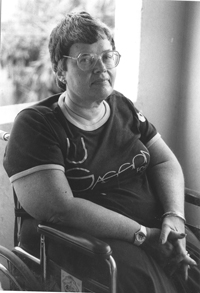

|
This month
Theatre boycott begins Posters and flyers circulated throughout the Island by an anonymous group urged black Bermudians to boycott movie theatres to protest segregated seating policies. The boycott, which got under way as Bermuda’s 350th anniversary celebrations were in full swing, was the brainchild of the Progressive Group, a group of young adults, most of them professionals and recent university graduates who had been meeting in secret at the Flatts home of Edouard and Rosalind Williams. Flyers gave June 15 as the start date of the boycott. It started slowly, but gathered steam and on June 23, the six theatres operated by Bermuda General Theatres had to close their doors because of a lack of business. Activists Kingsley Tweed and Richard “Doc” Lynch had no connection with the Progressive Group. But they fired up the crowds who gathered outside the Island and Playhouse theatres in Hamilton with their speeches. Theatre owners were taken off guard. Bermuda General Theatres president James Pearman misread the mood of protestors, famously calling the boycott “a storm in a teacup”. Parliamentarians debated its pros and cons. There were calls for the Progressive Group to come forward and negotiate with theatre owners, along with promises that a new theatre then under construction would have open seating when it opened. Members of the Progressive Group refused to emerge from the shadows and black patrons and community leaders stood firm. It took a mere two weeks for the boycott to achieve its purpose. On July 2, theatre owners announced the end of segregated seating. Days earlier, the hotels had announced an end to their policy of segregated seating in restaurants and nightclubs, though not in accommodation. It was, Dr. Eva Hodgson wrote years later, “the most significant social protest in Bermuda’s social and political development since emancipation”. In 1999, the year of the 40th anniversary of the boycott, the identities of the Progressive Group were revealed at a tribute at City Hall. In 2002, their story received a wider airing in Errol Williams’ documentary , When Voices Rise… The members were: Dr. Stanley Ratteray, Edouard and Rosalind Williams, Clifford Wade, Marva Phillips, Coleridge Williams, Rudy and Vera Commissiong, Clifford and Florenz Maxwell, Eugene Woods, Esme and Lancelot Swan, Dr. Erskine Simmons, William Francis, William Walwyn and Gerald and Izola Harvey. Sources: A Storm in a Teacup—the 1959 Bermuda Theatre Boycott and Its Aftermath by Dr. Eva Hodgson, Research by Dale Butler; ‘A Story of Triumph’, The Bermudian, April 2002 |
|
Tall Ships in town The Bermuda leg of the Tall Ships Atlantic Challenge ended with a spectacular line-up of ships along Front Street. Four days of celebration concluded on Monday, June 15 with the Parade of Sail along the North Shore. Governor's final resting place The remains of 19th Governor George Bruere, which were found beneath the floorboards of St. Peter’s Church, last August, 228 years after his death, were reinterred on June 6. Governor Sir Richard Gosney presided over the ceremony at St. Peter’s. Breuer was unpopular, but the mystery of why he ended up beneath the floorboards remains unsolved. ‘We are sailing’ opens at June 19 at Masterworks Museum in the Botanical Gardens. The exhibition, which explores Bermuda’s special connection with the sea, will run until the end of the year. Historical Heartbeats lecture series will feature a day sail around Bermuda on Saturday, June 20. Historians Drs. Clarence Maxwell and Michael Jarvis will present ‘400 years in a day’, aboard a fast ferry. The boat will leave the Hamilton Ferry terminal at 9 a.m. The $30 fee will include lunch. For more info, email Dr. Kim Dismont Robinson at kdrobinson@gov.bm |
|||||||||
| © 2009 Bermuda Biographies All rights reserved |
|||||||||||


